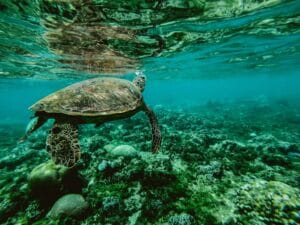African households’ overfishing has grave consequences for the people’s standard of living and the environment. Due to the cultural practices of the local population, numerous households rely significantly on fishing as a means of generating income. Households consider fish as the main protein consumption instrument that replaces the costly animal meat intake. Nevertheless, according to the Borgen Project fish stocking continues to decrease, asserting that almost 40% of fish are obtained illegally. This further deprives West African communities of about $1.3 billion in revenue. Policymakers must institute policies to curb overfishing in West Africa while improving household food security and encouraging sustainable fishing practices.
What are the Consequence of Overfishing in West Africa?
The alarming nature of overfishing by the populaces threatens the very existence of humanity, particularly in West Africa. Overfishing in West Africa poses a risk of food insecurity and increased poverty in the region. Fish is caught illegally owing to households who are involved in rejecting the regulating measures that force them to report their fishing activities both in shallow and deep-water fishing around the coast. In other words, they disobey stipulated sustainable practice guidelines that guide marine resources including fish cultivation. This depletes fish stock, negatively affects the economy, and exacerbates food insecurity.

Image source: Pinimg.com
Poverty and Hunger in Africa
“No poverty” and “Zero hunger” are the number one and two components of the United Nations Sustainable Development Goals (UN SGDs), respectively. Recently, drought, temperature rising, and political instability in countries like Burkina Faso, Mali, and the like have worsened the poverty and hunger challenges. According to STATISTA (Chart: Hunger in Africa: The Situation is Serious | Statista), 278 million people on the African continent suffer from chronic hunger. In 2022, UNICEF postulated that “World hunger surged again in 2021, with 9.8% due to undernourishment rising from 8% to 9.3% from 2019 to 2020, affecting between 702 and 828 million people” (Brenya et al., 2024).
In West Africa, fishing plays an essential role in the various households living at the seaside. Thus, fish consumption marks a significant primary component in providing a nutrient reimbursor to household food security. Hence, it enables access to sufficient protein as well as serving as a source of occupation for the populace. In a swift, addressing UN SDGs 1 and 2 requires sustainable fishing practices and a holistic comprehension of the marine resources and their effect on these goals.

Contribution of Fishing to the Economy
In West Africa, most of the countries along the coast side have access to the sea. This plays a crucial role in their way of life, destined to be fish farmers and harvesters. This attitude and knowledge insight are imprinted in the coming generation. Thus, it grows the region’s economy via direct and indirect employment opportunities. Horemans and Kébé (2006) enunciated that fishery including other factors such as coastal industries and agriculture among others accounted for about 56% of West Africa’s Gross Domestic Product (GDP).
Furthermore, household members who are involved in small-scale fish harvesting and development use it as a dependable occupation that mitigates poverty and cyclical food insecurity. Moreover, fish exports from the West African nations to European nations improve their nations’ economies and increase revenue. For example, “fishing agreements with the European Union provide 120 million euros per year to eight of West Africa’s countries” (Horemans & Kébé, 2006).

Image source: Pexels.com
Defining Artisanal Fishing
Artisanal fishing is synonymous with subsistence or traditional fishing in coastal communities that use low capital, local tools, and technology to harvest fish. It features small boats, canoes, traditional fishing gear, and other methods such as hooks and lines, nets, traps, and pots. These features are not classified under large-scale or commercial fishing. Artisan fishing to some extent contributes to UN SDG 14, “Life Below Water,” unlike the industrial fishing which accommodates more discarded bycatch.
global Overfishing
In “Fish and Overfishing” article Ritchie and Roser (2021) asserted that not only has the global population increased but also household fish consumption has increased over the half a century ago. This has amplified the burden on fish stocks globally. Presently, most countries are involved in other means of engaging fish production in order to feed the growing population. According to STATISTICA and Standard News, China is the leading producer of the world’s farmed fish production in controlled environment such as ponds and fish tanks. Governments around the world are massively investing in aquaculture which includes rearing fish, inter alia, salmon, tilapia, and catfish, while putting measures in place that monitor fish overexploitation and unregulated method implemented by households living in the coastal areas (Brummett et al., 2008; Mapfumo, 2022). In other words, they motivate people to adopt sustainable fishing practices.

Image source: Pexels.com
Commercial Fishing Nets and Trawler Boats
Though humans cannot avoid consuming fish, it’s imperative to establish the effects of fish consumption on the marine ecosystems, especially, the methods and materials used to catch them. Commercial fishing vessels and trawler boats are among the regular channels used in catching fish in the various geographical water bodies. Trawlers are characterised by cone-shaped trawl nets that are hauled over stretched areas to drag and catch fish. For example, side trawlers that feature nets arrayed from the side of the vessel, freezer trawlers that enable frozen fish, and the like.
Consequently, commercial fishing vessels in the marine ecosystems are usually boats and ships that are purposely designed to catch aquatic life like fish, lobsters, and crabs, among others. In a nutshell, these methods of fishing pose an essential threat to the ecology. According to Greenpeace, over a third of worldwide fish stocks are overfished, imperiling biodiversity, disrupting ecosystems, and threatening future supplies of protein-rich seafood.

Image source: Shutterstock.com
Solutions to Overfishing—Sustainable Methods of Fishing
The government needs to raise awareness of sustainable fishing and enact strict policies about overfishing especially in the coastal areas (Justice et al., 2020). Highlighted below are some of the measures that may provide solutions to overfishing;
- Households living in coastal areas see the whole area for viable fishing. Measures can be taken to restrict fishermen not to fishing in a particular zone, thereby preserving fish in that area.
- Catch quotas can also prevent overfishing. This is the situation whereby fishermen are given a specific quantity of fish; they can harvest within a specific duration.
- Enabling research and development training for fishermen who unknowingly destroy the marine ecosystem.
- Establishing a household fishing association that is in charge of decision-making and sustainable practice adoption by all fishermen.
- Employing extension and advertising agencies who will educate consumers to buy from fishermen who practise sustainable fishing.
Moving forward
Overfishing in West Africa and the world at large is a major contributor to household food insecurity. Government and non-governmental organisations ought to promote efforts to address overfishing challenge via international collaboration by safeguarding the household activities on the sea and encouraging sustainable fishing practices.
Achieving The United Nations Sustainable Development Goals And How They Link To The Consequence of Overfishing in West Africa
In 2015, the United Nations adopted and pursued to achieve 17 Sustainable Development Goals (SDGs). Below are some of the goals that are correlated with the consequence of overfishing in the West Africa region;
- SDG 14, Life Below Water, is the first one that comes to mind, as fish live in water. Overfishing threatens the marine ecosystem and gives it no room to replenish.
- SDG 1, No Poverty, is next in line as households unable to generate income will do whatever is necessary to feed themselves, including going to sea to catch fish. Poverty is mitigated via measures that curb overfishing.
- SDG 2, Zero Hunger. Overfishing leads to the shortage of fish as they are unable to replenish to meet the growing demand. Sustainable fishing practices are the sole panacea to ensure a consistent supply of fish to curb protein hunger.
- SDG 13, Climate Action, Overfishing is a major promotor of climate change; hence adopting measures to control it reduces the effect of climate change.
Overfishing is a crucial issue in West Africa; bringing it in line with the SDGs can improve the sea, households, and a sustainable future.
A Thrivable Framework
The THRIVE Framework plays a crucial role in resolving issues of household poverty, hunger, and overfishing. It promotes the basic tools for ensuring access to essential resources that enhance household ability to sustain the environment and food security.
The THRIVE Project aligns with the UN SGDs and its core principles that promote good health and well-being. To learn about the project, visit our website. THRIVE has its own set of publications that enlightens readers in achieving thrivability. You can track our informative, diverse blogs and podcast series and learn additional details about our regular live webinars. Sign up for our newsletter to keep informed.

















